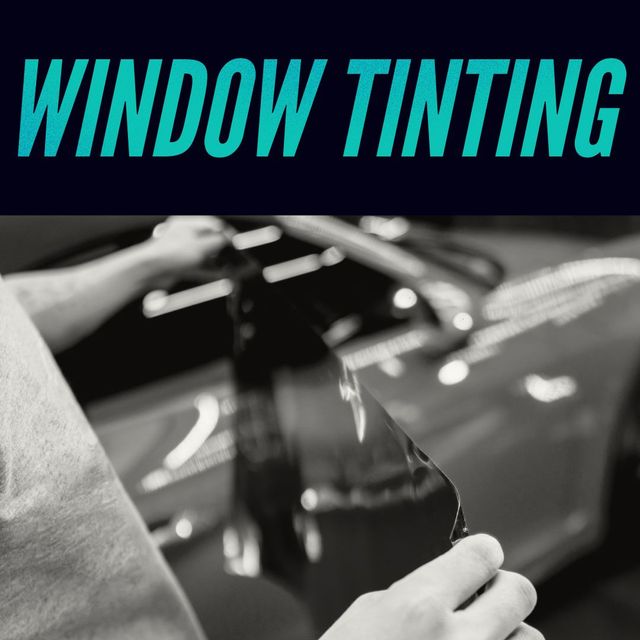Custom-made Automobile Window Tinting Providers for a Streamlined and Elegant Look
Wiki Article
Window Tinting Regulations and Guidelines: What You Required to Know Prior To Tinting Your Vehicle
Prior to proceeding with home window tinting for your vehicle, it is important to acquaint on your own with the varied legislations and standards that govern this practice throughout various states. These guidelines determine the allowable degrees of tint darkness, often determined by noticeable light transmission (VLT) portions, and consist of details stipulations for front windshields intended at guaranteeing roadway safety and security.Introduction of Window Tinting Rules
Home window tinting regulations are regularly based on variant across various jurisdictions, mirroring local guidelines and safety and security factors to consider. These regulations dictate the permitted levels of color darkness and reflectiveness on automobile home windows, guaranteeing that motorists preserve adequate exposure while also shielding against damaging UV rays and warm.Many laws classify home window tinting based upon the Visible Light Transmission (VLT) percent, which shows the quantity of light that can go through the window. Typically, lower VLT portions indicate darker tints. Regulations usually differentiate in between the front, side, and rear home windows, with stricter restrictions used to the front windscreen to boost safety and security for both the vehicle driver and other roadway customers.
Compliance with window tinting guidelines is vital, as violations can result in penalties, necessary removal of the color, and prospective rises in insurance coverage costs. It is necessary for vehicle proprietors to acquaint themselves with neighborhood legislations prior to proceeding with window tinting installations.
State-by-State Tint Regulations
Recognizing the details home window tinting regulations in each state is essential for automobile proprietors seeking to adhere to the legislation. Each state in the U.S. has actually established its own collection of policies controling window tinting, which can differ considerably. These laws often determine the allowable levels of color darkness, the kinds of windows that can be tinted, and any clinical exceptions that may use.For example, states like The golden state have strict limitations on color darkness for front home windows, while others, such as New Mexico, may permit darker tints. In addition, specific states mandate specific exposure portions for different home windows, consisting of the windshield, front side windows, and rear home windows. It is crucial for vehicle proprietors to acquaint themselves with their state's legislations to avoid potential penalties or penalties.
Furthermore, some states might need a qualification sticker label to be put on colored home windows, indicating conformity with state laws. Failure to stick to these policies not just risks legal repercussions but can additionally influence safety and visibility while driving. Vehicle owners should perform extensive research or speak with local authorities to make sure full understanding and compliance with state-by-state color regulations.
Allowed Tint Levels and Kinds
Many vehicle proprietors might be shocked to learn that allowed color degrees and types vary extensively across different states. Each state has established its own guidelines concerning the acceptable darkness and reflectivity of window color, frequently determined by Visible Light Transmission (VLT) percents. VLT refers to the quantity of light that can travel through the tinted home windows; thus, a lower portion suggests a darker color.
Additionally, the kinds of tint materials enabled can vary, with some states prohibiting metal or mirror-like surfaces. It is vital for lorry owners to acquaint themselves with their state's details legislations to make sure conformity. Non-compliance can result in penalties, mandatory removal of the color, or various other legal repercussions, making it important to understand these guidelines prior to proceeding with installation.
Medical Exemptions for Tinting
While not all states supply allocations for clinical exemptions concerning window tinting, those that do recognize the necessity for details individuals to improve visibility and convenience due to medical problems. Numerous medical problems, such as lupus, skin cancer, and certain eye conditions, can render people particularly delicate to sunshine. Subsequently, these people may call for darker colors to shield themselves from dangerous UV rays and glare.
It is very important to keep in mind that despite a medical exception, there might still be limitations on the degree of tint permitted. go now Conformity with state laws makes sure that individuals are both protected and within legal limitations. Those taking into consideration clinical exceptions should call their neighborhood Department of Electric motor Cars or equal authority to understand the treatments and requirements necessary to apply for an exception successfully.
Charges for Non-Compliance
Falling short to abide by home window tinting legislations can bring about substantial charges, which vary by state. Law enforcement firms are encouraged to provide citations for vehicles that do not stick to the specified tinting regulations. These charges usually consist of penalties, which can vary from modest quantities to several hundred bucks, depending on the seriousness of the offense and the state concerned.In some territories, repeated offenses might result in intensifying penalties or additional fines, such as necessary court appearances. Non-compliance may necessitate the removal of unlawful tinting, typically at the owner's expense. In extreme situations, regular culprits may deal with suspension of their automobile enrollment until conformity is attained.
Additionally, insurance ramifications might emerge from receiving multiple citations for home window tint infractions. Insurance companies may see such violations as an indication of riskier behavior, possibly bring about raised premiums or difficulty in coverage.
To stay clear of these penalties, it is critical for automobile owners to familiarize themselves with their neighborhood window tinting regulations and make certain that their vehicle complies (Window Tinting). This positive method not just prevents legal ramifications but also promotes roadway safety
Conclusion

Most guidelines categorize home window tinting based on the Visible Light Transmission (VLT) percent, which indicates the quantity of light that can pass through the window. Compliance with window tinting policies is critical, as violations can result in fines, mandatory removal of the tint, and potential rises in insurance coverage premiums.Comprehending the specific window tinting regulations in each state is important for car proprietors seeking to comply with the regulation. These guidelines typically determine the allowed degrees of tint darkness, the kinds of windows that can be tinted, and any medical exceptions that might use.
For circumstances, states like The golden state have rigid constraints on tint darkness for front windows, while others, such as New Mexico, may enable darker colors.
Report this wiki page